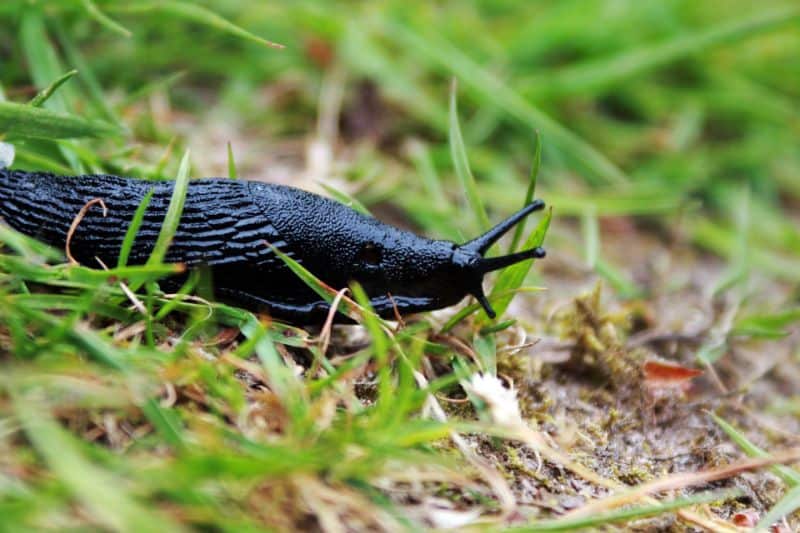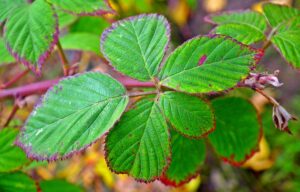What eats slugs? Slugs have many natural predators, including toads, snakes, turtles, ground beetles, firefly larvae, mice, moles, hedgehogs, songbirds, chickens, ducks, and even newts just to name a few.
Some predators prey specifically on slugs, while others will eat them if they are available. By understanding what eats slugs, you can work to reduce the population of these pests in your garden.
On this page, we will explore some natural slug predators and what you can do to control slugs in your garden.
What Eats Slugs – Natural Slug Predators
Do you know what eats slugs? While there are many animals that enjoy a good slug feast, there are a few that stand out as the top contenders. Let’s take a look at some of these slug predators.
Frogs and Toads

Frogs and toads eat slugs and snails. They are the primary predators of slugs and snails, so they play an important role in keeping slug and snail populations under control. Frogs and toads will also consume large numbers of these pests since they find them to be palatable and their habitats generally tend to overlap.
Snakes
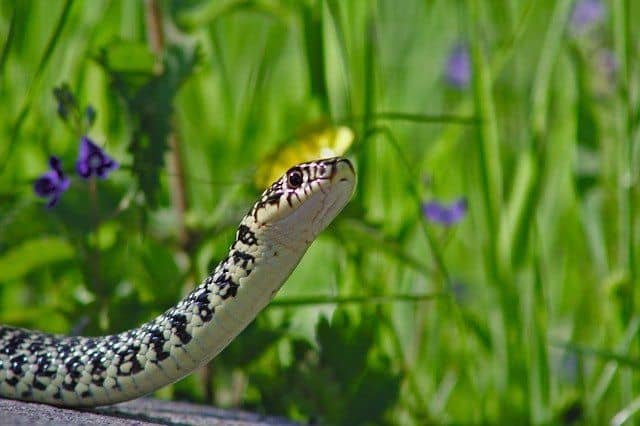
Snakes eat slugs. In the wild, snakes are an important predator of slugs and help to keep their population in check.
There are a few different species of snakes that feed on slugs, including the garter snake, the common garden snake, and the grass snake. All of these snakes can be found in North America.
Other snakes, such as the rat snake, will eat slugs when they are available, but they generally prefer other prey items such as rodents, birds, and lizards.
Turtles

Slugs are a common prey item for many different types of turtles. For example, the red-eared slider is known to eat slugs, and so is the painted turtle.
Turtles especially like smaller slugs, but larger turtles will eat full-grown slugs as long as they can easily swallow them.
Ground Beetles
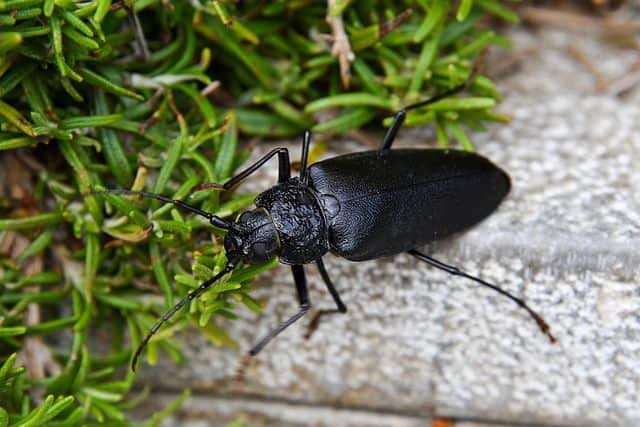
Ground beetles are probably the slugs’ biggest predators. These black, hard-bodied beetles can be found in gardens and compost heaps, where they feed on insects, earthworms, and other small insects. They eat both the adults and the eggs of slugs, and they’re so good at it that they’ve been nicknamed “slug assassins”.
Firefly Larvae
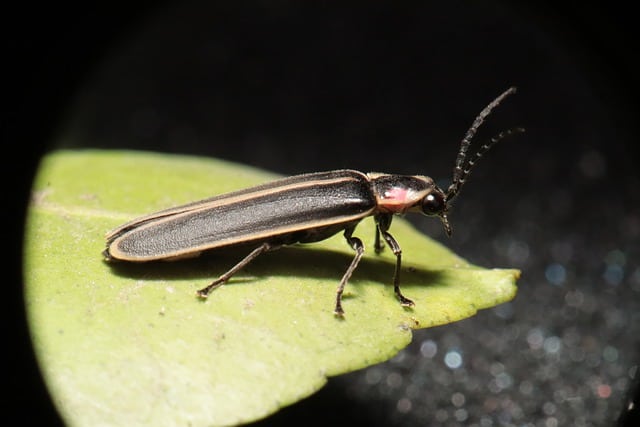
Firefly larvae are a natural predator of slugs and they have mouth parts that are specialized specifically to feed on larvae, terrestrial snails, and slugs. They eat them by injecting a paralyzing toxin into their body and then sucking out the slug’s internal organs.
Nematodes
Nematodes (Buy Online) are a type of worm that eats slugs. They are very small and can be difficult to see with the naked eye. Nematodes live in the soil, and when they find a slug, they burrow into their body and start to eat them alive.
Slugs are very vulnerable to nematodes because they have no natural defenses against them. This is why slugs are so susceptible to being eliminated by nematodes, and why nematodes are such an effective means of controlling slug populations.
Songbirds

Songbirds are a natural predator of slugs and they can be very effective at controlling slug populations. Some people believe that by encouraging songbirds to nest near their garden, they can help to reduce the number of slugs and improve the health of their plants.
Slugs are a popular food for many types of birds, including robins, blue jays, catbirds, blackbirds, and others.
Chickens

Chickens are natural predators of slugs and will eat them whenever they can. Slugs make up a large part of the diet of free-range chickens, and many people find that their garden is virtually slug-free if they keep a few chickens around.
If you’re having problems with slugs in your garden, consider adding some chickens to your backyard. Not only will they eat the slugs, but they’ll also provide you with fresh eggs and organic compost.
Ducks

Ducks are omnivorous and enjoy a wide variety of foods, including slugs. Slugs are a favorite food of ducks and they can be found in wetlands and other areas where ducks live. They especially enjoy eating larger slugs but will eat smaller ones as well. Plus, ducks will consume large numbers of slugs every day, which helps to keep slug populations under control.
Hedgehogs

Hedgehogs are insectivores, which means they eat mainly insects. Slugs make a great meal for hedgehogs because they’re slow and unprotected. In fact, hedgehogs will even push around rocks and debris to get to the slug’s hiding places.
Foxes
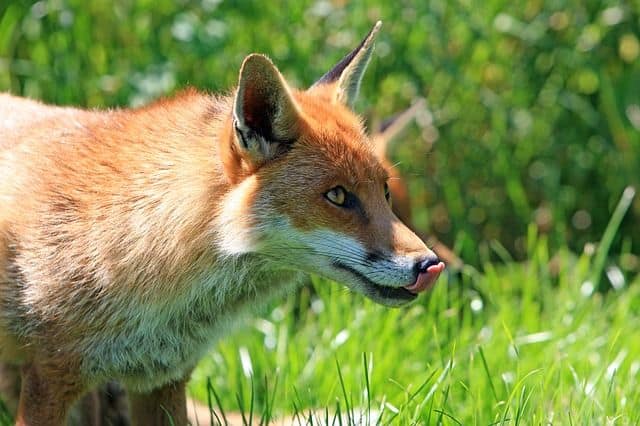
Foxes eat slugs when their regular prey (such as small rodents) are unavailable. Slug predation by foxes appears to be opportunistic and is highest when other prey items are scarce. Slugs may represent a larger proportion of the diet of foxes during the spring when other small mammalian prey are less available.
Lizards

Lizards are a common predator of slugs. They eat them mostly for the moisture that they contain, but also because slugs can be a good source of protein. And there are many different species of omnivorous and carnivorous lizards, and most of them will eat slugs given the opportunity.
Moles
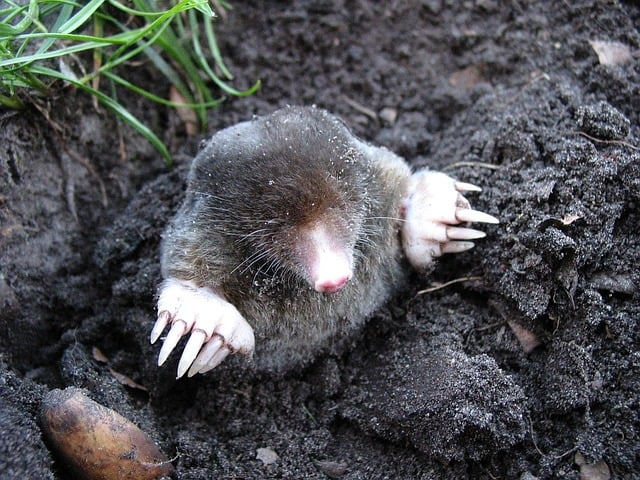
A mole’s diet consists mostly of earthworms, but they will also eat slugs and other soft-bodied creatures. Moles also have a keen sense of smell and a delicate nose that allow them to effectively locate hard-to-find slugs.
Mice
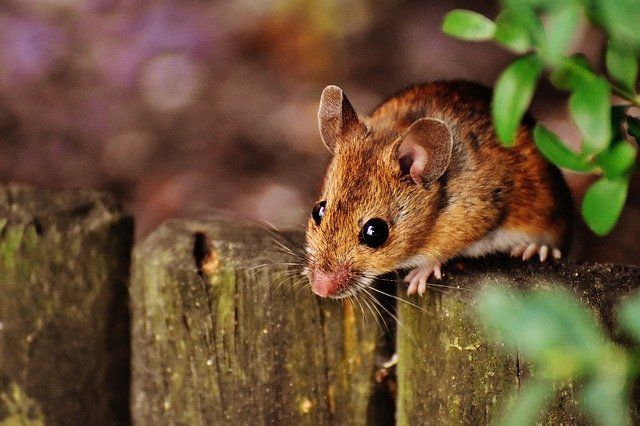
Mice are natural predators of slugs and snails. In fact, they are one of the primary predators of these slimy creatures. This is because slugs and snails are a major source of food for mice, and they provide a lot of important nutrients that help keep mice healthy.
Shrews
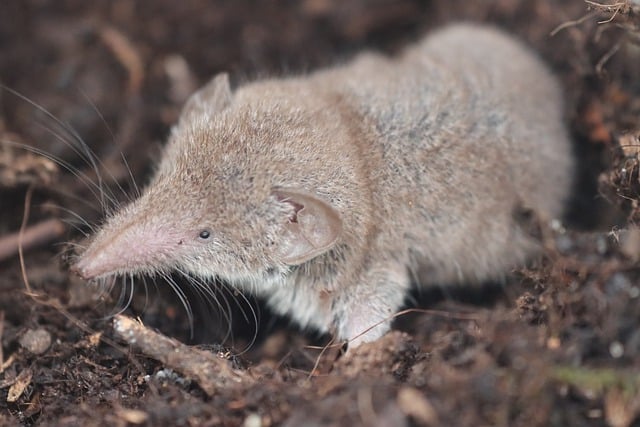
Shrews are natural slug predators and eat them voraciously. In fact, the presence of shrews can actually help to control slug populations. There are a few other animals that will also eat slugs and snails, but shrews are by far the most voracious predators of these invertebrates. This is probably because slugs and snails represent an easy source of food for shrews, as they are slow-moving and have no defenses against predation.
Newts
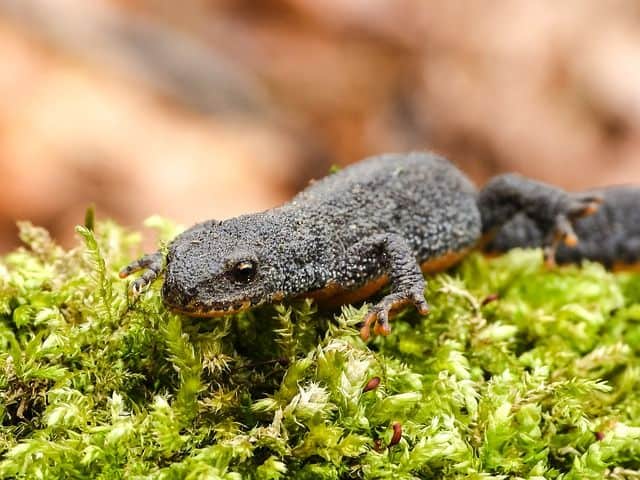
Newts are a type of salamander, and they are slug predators. They will eat both the adults and the eggs of slugs, as well as any other soft-bodied invertebrates they can find. This makes them an important natural control for slug populations in wetland areas.
Can Dogs Eat Slugs?
No, dogs should not eat slugs. Slugs can harbor parasites like lungworms, and can also transmit other parasites and diseases to dogs that can kill or harm them.
Can Cats Eat Slugs?
No, cats should not eat slugs. Slugs are a common carrier of parasites, and can also transmit other diseases to cats. For this reason, it’s best to keep your cat away from slugs and any other outdoor creatures that could potentially make your pet sick.
How To Attract Slug Predators
One way to reduce the population of slugs and snails in your garden is by attracting wildlife that eat slugs and snails. Birds, hedgehogs, and amphibians such as newts and frogs are natural predators of these pests and will help to keep their numbers down. Below, we will discuss some ways to attract these animals to your garden.
Native Plants
One way to attract slug predators is to plant native plants in your garden. Slug predators, such as ground beetles, centipedes, and spiders, are naturally drawn to these plants.
For example, ground beetles eat slugs and can be attracted to areas with plants such as yarrow, goldenrod, asters, and black-eyed Susans.
Lacewings eat the eggs of slugs and can be attracted to humid areas near ponds or streams with plants such as aster, Joe-pye weed, speedwell, sweet pepperbush, cardinal flower, and swamp milkweed.
Garden Pond
Garden ponds are a great way to attract slug predators. The water provides a habitat for predators such as frogs and toads, and the pond also attracts other creatures that prey on slugs, such as hedgehogs and birds.
There are some things you can do to make your garden pond even more attractive to slug predators:
- Add some rocks and other features to create hiding spots.
- Keep the pond clean and free of debris.
- Give predators a place to scavenge for food.
- Add some aquatic plants. This will provide shelter and food for slug predators.
Brushwood Pile
One way to attract slug predators is to create a brushwood pile. A brushwood pile is a heap of sticks and twigs that provides shelter and nesting sites for predators such as hedgehogs, beetles, birds, and toads. The pile will also attracts slugs, which makes it an ideal spot for slug predators to hunt.
Hedges
Slug predators can be attracted to your garden by creating a hedgerow. A hedgerow is a low fence of shrubs or trees, and the dense growth of the shrubs and trees will provide cover and protection for slug predators, such as hedgehogs, birds, and beetles.
Outdoor Lighting
Another thing you can do to attract slug predators is to install outdoor LED lighting. Slug predators, such as birds, are attracted to light, and so they will be more likely to visit your garden at dusk if there is some light present.
Leave Some Open Areas
Larger slug predators can be attracted to your garden by leaving some open areas. This will provide them with a place to hunt slugs and also allow them to move around easily.
Mow Your Lawn Less Often
Slug predators, such as birds and lizards, prefer areas with long grass and other cover where they can find food and shelter. By allowing your lawn to grow a little longer, you can create a hospitable environment for these predators and help to control the slug population.
Avoid Using Chemicals
Slug predators can be attracted by providing a safe place for them to hunt. One way to do this is to avoid using chemicals in the garden, as these will poison the predators as well as the slugs.
Slug Control
Are slugs eating your plants? If so, there are ways to control these pests. One way is to use bait traps, which can be made at home or purchased. Another way is to use barriers to keep the slugs away from your plants.
Slug and Snail Traps
Beslands 5 Pcs Snail Trap 3.9″ x 2.4″ x 2.8″ Eco-Friendly to Catch Slugs Snails Catcher (Green)
Beslands Slug and Snail Traps (Buy Online) can be an effective way to reduce the population of slugs and snails in your garden. We’ve tried out the Beslands 5 Pcs Snail Trap and found that it’s easy to use and effective. If you have a garden or flower bed, we recommend giving these affordable traps a try.
BestNest Set of 4 Esschert Design Snail-Shaped Ceramic Slug Traps
If you’re looking for an easy and fun way to get rid of pesky slugs in your garden, look no further than the BestNest Snail-Shaped Ceramic Slug Traps (Buy Online). Each trap is made from sturdy ceramic and shaped like a friendly green snail. Just fill the base of each trap with a fermented attractant (rotten fruit or adult beverage). Best of all, the cute design won’t detract from your landscape, so you can continue to enjoy your beautiful garden without fear of slug damage.
Slug Pellets
Garden Safe 4536 Slug & Snail Bait (HG-4536) (2 lb), Case Pack of 1
Garden Safe Slug & Snail Bait (Buy Online) is an insecticide that can be used to kill slugs and snails. The bait works within 3 to 6 days of being ingested by the slugs or snails. The granules can be scattered on lawns or soil around flowers, gardens, vegetable plants, and fruit trees where slug or snail control is needed.
Bonide Slug Magic Organic Pellets Insect Killer 1.5 lb.
Slug Magic (Buy Online) is a safe and organic way to get rid of slugs. The pellets are biodegradable and can be used around pets and wildlife, as well as in fruit and vegetable gardens. The active ingredient in Slug Magic is iron phosphate, which is non-toxic to humans, but it kills slugs on contact.
One bag of pellets will cover an area of 1500 square feet, and if you’re looking for an environmentally friendly way to get rid of your slug problem, we recommend that you try Bonide Slug Magic Organic Pellets Insect Killer.
Monterey LG6500 Sluggo Wildlife and Pet Safe Slug Killer, 2.5 lb.
Monterey Sluggo (Buy Online) is a great product for controlling slugs and snails. This granular bait contains iron phosphate, which occurs naturally in soil, so it is safe around wildlife and pets. Sluggo is also rain-fast, so it will continue to work even after a rainstorm.
Slug and Snail Barriers
Copper Foil Tape
If you’re looking for an easy and affordable way to keep slugs and snails out of your garden, look no further than Copper Foil Tape (Buy Online). This handy product can be wrapped around pots, planters, or the bases of plants to create a barrier that slugs and snails won’t cross. So if you’re battling an invasion of these pests, consider using copper foil tape as part of your defense strategy.
SZONEE Copper Mesh 5″ X 100FT Roll
SZONEE Copper Mesh (Buy Online) is 100% pure copper, knitted into a strong, durable fabric that will keep slugs and snails out of your garden for years to come. The 5-inch width is the perfect size for protecting flower beds, borders, and other small areas in your garden, while the 100-foot roll provides plenty of coverage.
Slug Hunting
Manual slug hunting is a good way to locate any slugs in your lawn or garden. This can be done by searching for them on leaves and under rocks, or by trapping them using various methods.
Slug Resistant Plants
There are a few plants that are resistant to slugs and snails. Some good choices for slug-resistant plants include hydrangeas, foxglove, lavender, and ferns.
Hydrangeas are a great choice because they come in both pink and blue varieties, and the flowers are large enough not to be damaged by slugs.
Foxglove is also a good choice because it has spiky blooms that slugs don’t like to cross.
Lavender is another good choice because of its durable flowers that have a lovely fragrance.
And ferns are a great option because they’re low maintenance and tend to be slug resistant.


